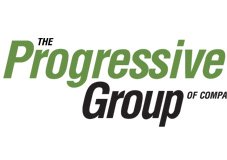Analysts see return to profits for hog farmers
Monday Jan 24 2011by Rod Nickel www.manitobacooperator.ca
(Reuters) -- Canadian hog farmers look to return to profitability later this year, slowing the pace of herd downsizing as high hog prices outweigh the negative effects of a surging Canadian dollar, industry analysts said Thursday.
Hog farmers have suffered from several mostly unprofitable years because of high feed costs, a strong dollar and the United States' country-of-origin meat labeling (COOL) law.
But Chicago live hog futures are one-third higher than a year ago, while forward contract prices in Canada from packers such as Maple Leaf Foods and Olymel touched five-year highs in the past year as farmers reduced their herds and pork demand remained strong.
"We're losing money now, probably going to lose money for a few more months, but summer of 2011's probably going to be profitable" in Canada and the U.S., said Ron Plain, agricultural economist at the University of Missouri.
"The economics are probably not good enough to cause us to want to expand the swine herd, but they're not bad enough to cause a large reduction."
Plain, who spoke Thursday at the Banff Pork Seminar, said times are tougher in Canada because the Canadian dollar is at par with the U.S. currency, leaving the industry smaller returns on exports to the U.S.
Tyler Fulton, director of risk management for H@ms Marketing Services in Manitoba, sees Canadian hog farmers turning profits before spring in part because of favourable feed costs relative to the U.S.
In the last six months, U.S. corn prices have shot up faster than barley values, giving western Canadian farmers a feed cost advantage over U.S. producers, he said.
"Our competitiveness has improved to the point that, arguably, we're more cost-competitive than we've been in the last six or eight years," Fulton said before addressing farmers at Manitoba Ag Days in Brandon, Man. "There's really no sign of that trend changing."
H@ms is a co-operative that buys hogs from Manitoba and Saskatchewan farmers.
Chicago Board of Trade (CBOT) corn futures gained more than 50 per cent in 2010 as the stocks-to-use ratio in the U.S. fell to a 15-year low.
Western hog farmers may have a feed edge for now, but barley prices eventually rise to stay in line with corn, Plain said. Corn is the main feed for pigs in Eastern Canada.
Stabilizing
Hog farmers in Canada and the U.S. have reduced herds in the past few years, with the Canadian herd falling to a 13-year low of 11.9 million head at Oct. 1.
But Canadian hog production is now stabilizing, Fulton and Plain said.
Pork demand has remained strong, with exports thought to have reached a record high in 2010 and domestic demand steady even as retail prices rise, Fulton said.
COOL, the U.S. labeling law that Canada and Mexico have challenged before the World Trade Organization, has made importing livestock more costly for American processors.
With fewer hogs shipped to the U.S., Canadian packer Maple Leaf is expanding production at its biggest plant and a new pork packer is opening at Moose Jaw, Sask.
"I think the rationale is that from a North American cost standpoint, the Western Canadian marketplace looks pretty good," Fulton said.
Back to News

Hog producers are looking at ways of meeting new animal care requirements as they come into effect (read article)


